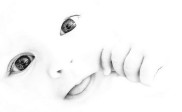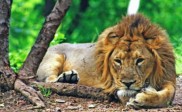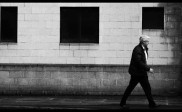Light Painting Techniques
In a dark environment, you need a long time to capture the surrounding scenery, but lights are instantly recorded. The light painting technique consists of using different light sources and moving them around, in order to paint shapes, lines and patterns during the shot. The camera sensor will record all the movements made by the light source during the many seconds or minutes of the exposure time. And the result will seem as if you were actually painting with light. With some practice and patience you will be able to produce magic.
What you will need:
Equipment:
You need to a have a camera that enables you to set long exposure times. So, a compact camera can be used, but it’s better to have a camera which will give you more control over other settings, like ISO, aperture, and the choice of the lens. Thus doing light painting photography with a DSLR is the best choice. The choice of the lens to be used will depend on what kind of scenery you want to capture. Having a zoom lens, such as an 18-200 mm lens, will help you deal with any situation you might encounter.
Accessories:
– A tripod is an essential accessory. It will guarantee you clear and sharp photos, especially with long exposure times.
– Another important accessory is a remote control. It will enable you to release the shutter without having to be near the camera which will give you more freedom in choosing the place where you will be moving your light source. It will also reduce any threat of camera shake that may occur at the moment of pressing the shutter release button. An alternative to the remote control is the use of the self timer which can provide you with just what you need if you don’t mind going back to set the camera after each shot.
-A flash is also recommended, as it will enable you to freeze certain elements during the exposure time and to make them fully visible.
– You will also need dark clothes, to make sure you don’t appear in the shot.
Light sources:
Light sources are your brushes in this particular painting technique, and they will also provide you with the colors to put on your canvas. The choice of the light to use is mainly determined by the thickness of the lines you are going to paint as well as by its color. The light intensity can also be important. But, it’s not necessary to use very powerful light sources if you are near the camera. A good quality flashlight and some color filters may be all what you need. But don’t hesitate to experiment with all sorts of light sources. You can, for instance, use the light coming from your cell phone’s screen, or you can make good use of the light coming from cars passing near you. Just don’t limit your perspective and use light sources as varied as you can. As for color filters, you don’t have to spend a lot of money buying them. You can, for example, use colored bottle caps or candy wrapping paper which are translucent and will let light come through them.

Photo by BURИBLUE
Setting the camera:
In order to get the best results you will need to set your camera properly. That’s why a DSLR is your best choice for taking light painting photos, as it will allow you to control the three main camera settings (ISO, aperture, and shutter speed) and it will also allow you to shoot in RAW giving you more control in the post processing stage.
-ISO: In light painting photography, just like with long exposure photography, you need to use the lowest ISO value you can set on your camera. Because, photos with long exposure times tend to produce noise more than regular shots. So, consider using an ISO value between 100 and 200 to avoid the noise problem and to make sure you can set a shutter speed slow enough for you to complete your painting.
-Aperture: The smaller the F number the more light will hit your sensor and the less depth of field you will get. So, you need to set your aperture depending on the exposure time you want to reach and how much detail you want in focus. It’s recommended to use small apertures, because it will be hard to focus in a dark environment and the small aperture will give you a depth of field wide enough to include everything you paint in the focus range.
-Exposure time: It goes without saying, that you will need really long exposure times to make sophisticated light paintings. So, the exposure time will be determined by the complexity of the light painting you intend to do as well as by the ISO value and aperture you set on your camera.
-Shooting in RAW: It’s better to shoot in RAW, as it will give you more control in the editing stage. You will be able to make precise and advanced changes to your photo and you will also be able to correct some mistakes you might have done during the shooting stage. By shooting in RAW, you can easily change the exposure, white balance and colors of your photos in a variety of post processing software.
Painting with light:
Once you have found a place where you want to create your light painting photo, you need to release the shutter and begin painting with light. Just, make sure your light source is always directed towards the camera or you won’t have continuous lines and shapes.
Here are some tips to help you in getting the best results:
– Prepare your shot before beginning the actual light painting. Since it will be hard to see everything in the dark, consider marking the places where you are going to paint with light to make sure you don’t get out of the frame. Also take some shots without any light painting done to determine the best exposure time, aperture and ISO to be used.
– Turn off your light source when moving from painting one shape to another. That way, you will have different painted elements that are clearly separated.
-When focusing, set your camera on manual focus, light the part you want to focus on, and turn the focusing ring until you are satisfied. Avoid automatic focusing, as it will not work very well in a dark environment.
-If you don’t want to appear in the shot, you will have to be moving constantly and also consider wearing dark clothes so that you don’t reflect any light.
Following are some inspiring examples of light painting photos:

Photo by ben matthews

Photo by Sean Rogers1

Photo by Michael.Sutton

Photo by Thomas Rockstar

Photo by BURИBLUE

Photo by Alexkess

Photo by Duane.schoon

Photo by AleX (xtyler)



